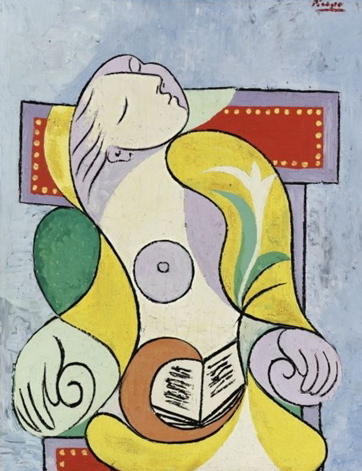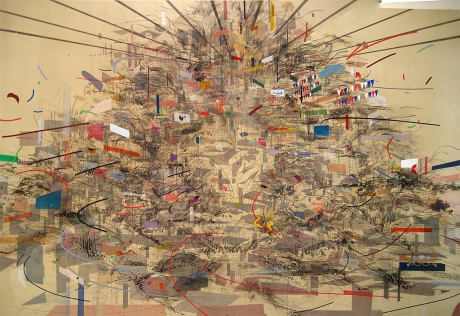La Lecture by Pablo Picasso

Background story:
It was completed by Picasso in January 1932 in time for his exhibition at the Kunsthaus in Zurich, entitled Picasso by Picasso: His first Museum Exhibition 1932, and is a portrait of his muse, Marie-Thérèse Walter, who it is said transformed the life of this great Modernist artist. This painting was among a series from the beginning of 1932, which introduced this young woman as an extraordinary presence in Picasso’s life and his art.
The story goes that the then forty five year old artist introduced himself to the seventeen year old girl outside a Paris Metro station. On recounting the tale of the meeting, Marie-Thérèse said she remembered Picasso’s words as they came face to face:
La Lecture belonged to a group of paintings, painted by Picasso in January 1932 in anticipation of the major retrospective he was planning that June. Today’s painting is Picasso’s depiction of Marie-Therese and it was the first time that she had appeared in one of his works. Earlier paintings of his showed her features implanted discreetly in the background and it was this unconcealed portrayal of his mistress which led his wife to realise that there was another woman in her husband’s life.“…I knew nothing – either of life or of Picasso… I had gone to do some shopping at the Galeries Lafayette, and Picasso saw me leaving the Metro. He simply took me by the arm and said, ‘I am Picasso! You and I are going to do great things together’…
Picasso’s lover and muse’s potent mix of physical attractiveness and at the same time her sexual naivety had an intoxicating effect on him and his rapturous desire for her brought about a number of compositions that are amongst the most sought after of his long career. In 1935, Marie Thérèse Walter had a daughter with Picasso, Maria de la Concepión, called Maya. Sadly for Maria-Thérèse, a year later in 1936, Picasso switched his affections to a new love, Dora Maar a woman he met when he was painting Guernica. Marie-Thérèse left Picasso and took their daughter to live in Paris.
source: http://mydailyartdisplay.wordpress.com/2011/02/02/la-lecture-by-pablo-picasso/
*wing of dove-peace and love
Heart-shaped face
Double portrait! Marie-Thérèse's face and she and Picasso are kissing







